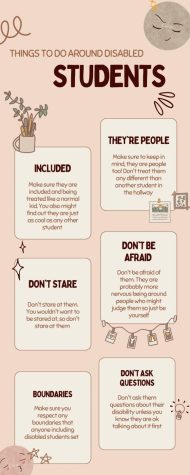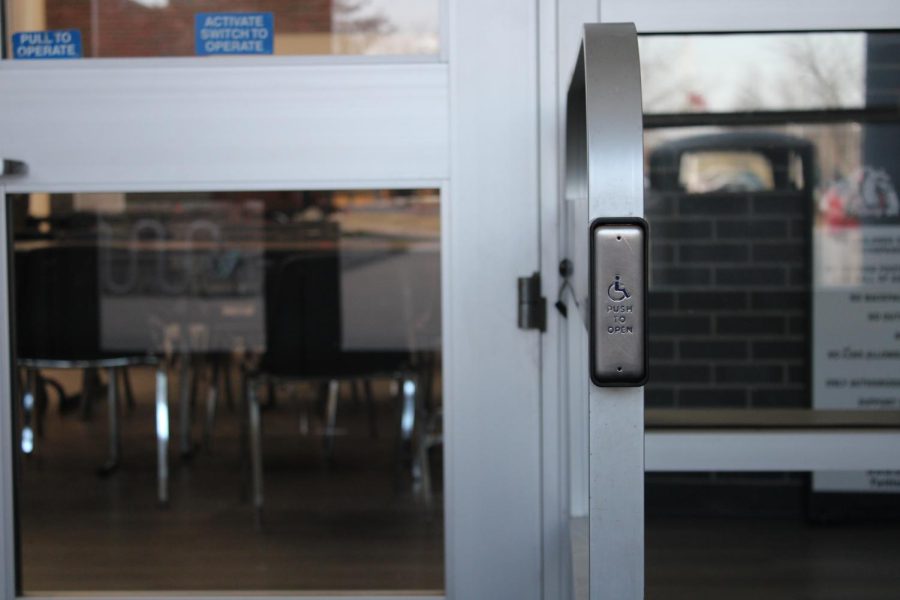Facing accessibility issues
Students with disabilities require specific accommodations in the school building
January 18, 2023
Most high school students can walk to class and chat with friends, not having to worry about the accessibility of the classroom, but junior Savannah Landgraf has to use the elevators due to her wheelchair and requires a wheelchair accessible table in each class.
“I don’t think [the school] is super accessible for wheelchairs,” Landgraf said. “There just isn’t a lot of space in the classrooms and it’s harder to navigate the lunch room and to get through the hallways too. It’s kind of frustrating at times when there isn’t a lot of space.”
NAHS has facilitators to assist students like Landgraf who have special accommodations. However, there are some difficulties when it comes to helping these students.
“The thing that I see that is very difficult for students with wheelchairs in general is insurance controls the wheelchair,” Landgraf’s facilitator, Dr. Jennifer Miller said.
Miller, who works with juniors and seniors, says students and their families have to fill out stacks of paperwork just to get a wheelchair covered by insurance.
Mrs. Patti Howland is the other facilitator and she works with freshmen and sophomores.
“I do [miss students],” Howland said. “I will move up with them so next year I will have eleventh and tenth graders and the other facilitator [Dr. Miller] who currently has eleventh and twelfth will have twelfth and ninth.”
Both facilitators have also been special education teachers. While Howland was an English teacher prior to special education, Dr. Miller has always worked with special education students.
“Don’t get me wrong, I love literature but the grammar pieces were awful,” Howland said. “I didn’t like grading all those papers. But I really do prefer special education.”
Miller taught 15 years of special education before becoming a facilitator and has been at NAHS for three years. While being a teacher and helping guide these students there is a lot on their shoulders to do the right thing.
“There are days I leave here and say ‘Oh yes we did that, that was a perfect approach’ and there are days I leave and say ‘oh I didn’t handle that right’,” Howland said. “But that should be every job as long as you reflect on it and you adjust.”
While facilitators try their best to assist disabled students, sometimes they are limited on what they can do.
“I think the school could make, like, a wider space for people with wheelchairs to get through and stuff like that,” Landgraf said. “And maybe fix the elevators maybe make them not so slow.”
Landgraf says that while no staff members treat her any differently, some students do.
“I love to help them figure out what their strengths are,” Miller said. “Because when you have a disability sometimes everyone focuses on what you can’t do and I like to be able to figure out what they can do.”
Landgraf says that getting around the school isn’t extremely difficult, but it could be easier.
When people who don’t work with disabled people often think about disabilities they often think about physical disabilities and not as much as learning disabilities or mental disabilities. However, 33 percent of disabled students have a specific learning disability, according to The National Center for Education Statistics.
“A lot of times our disabilities can be our biggest assets when we figure out how to use them the right way,” Miller said. “Like a student with ADHD might have trouble focusing, but they also have more energy than anyone else.”
Not all disabilities are things like wheelchairs though. Sophomore Jadon Sparrow has a condition that affects his bones, making it difficult to move around without pain.
“My condition hasn’t affected me much going to school,” Sparrow said. “But the pain it brings does hurt extremely bad at times as I’m required to take pills before school now and I’m currently using the elevator.”


